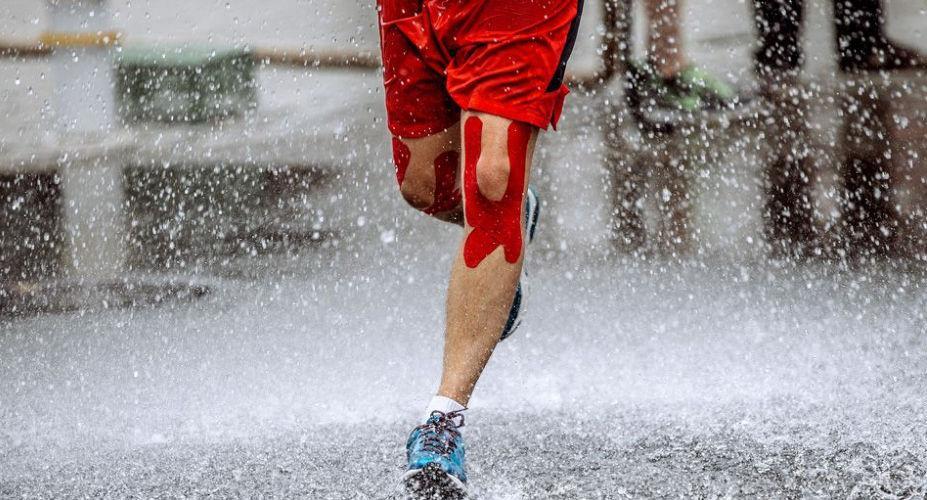
How to pace your training runs and races to ensure the best results
When you first start running, pacing probably isn’t something that’s on your mind. You simply step out the door or onto the treadmill and run, hoping to finish not feeling like you need to vomit.
However, even in these early stages pacing is important, mainly because not going faster than your body can handle will lessen the likelihood of vomiting. And once you’re a little more experienced – starting to sign up for races or taking part in your local parkrun regularly – proper pacing becomes absolutely crucial to a controlled, successful run.
For more info on why pacing is so important, we spoke to Tom Marshall, athlete and Saucony UK ambassador.
What is pacing and why is it important?
Pacing is one of the essential parts of your training. Determining how quick to run every day can make a huge difference to your training and racing.
It is hugely important to determine how fast your recovery runs should be, and likewise, at what pace you can run your harder sessions. Each run adds an integral element to your week’s training and, when done right, can have serious benefits for your racing.
Running your recovery sessions too hard can have a negative impact on your session the following day. It’s likely to lead to a higher level of fatigue that means you can’t perform well during your session. Likewise, going out too hard in a session can leave you posting positive splits where you get progressively slower through the session – a bad thing and negating the benefits of the session.
Why is pacing better than just going out as fast as you can and hoping to hold on?
There is zero benefit going out as fast as you can and trying to hold on, with the possible exception of 400m races and below! You’ll end up filling your body full of lactic acid very quickly and find yourself struggling to recover for the rest of the run.
Take a four-lap one-mile race. If you go out in a 60-second lap then you will probably be full of lactic within 30 seconds, which has a hugely detrimental effect on your running style and pace. The likelihood is that each lap will get considerably slower, and you could end up following that 60-second first lap with 70, 80, 90, resulting in a very painful five-minute mile.
However, if you paced that better, and aimed for 72-second laps, you could end up maintaining that pace and running 4min 48sec, feeling a lot better in doing so.
The same applies to all distances. If you’ve been hitting ten-minute miles during your sessions, then going off at eight-minute mile pace in a marathon will be something that your body isn’t used to. It won’t know how to deal with that, which probably won’t end well.
How do you train to get better at pacing?
There are two elements to this: listening to your body and getting used to the pace.
This applies for both harder sessions and easy runs. If you’re on a recovery run and you finish that run in pain and gasping for air, you’ve run too hard. You should be finishing feeling like you could go out for another few miles no problem. Listen to your body, find out what is a comfortable pace for those easy runs and practise at that pace.
The same goes for faster sessions. Find out what your body can handle and run to that pace. You will naturally progress the more sessions you do, so don’t panic if it’s not as quick as you’d like. Find the pace that you can finish a session at and train to that pace. Again, you should be finishing knowing that you could do another rep or two.
This pace will be different for different kinds of sessions – 30-second hill sprints will be a different pace to a ten-mile tempo run, for example – so it’s important to determine your pace across different energy systems and varying session lengths. You can build on these over time.
Is pacing more important in longer races like the marathon, or is it equally important from mile to marathon?
The longer the race, the longer there is to hold on when you’re hurting. If you go out too hard in a one-mile race, the reality is that you’ll feel OK for around 400m, but you’ve then only got 1,200m or so to go, so you can get through that in a few minutes without too much stress to the body. It’ll hurt, but it won’t be a prolonged pain.
If you go out too hard in a marathon, on the other hand, you could have a long way to go when it starts to really hurt – it could be hours. This will do damage to the body, and will be an extremely unpleasant and painful prolonged period of time.
So, while it is hugely important to judge your pace to gain the best race times over every distance, it is a lot harder to finish the longer distances when you do get it wrong, and it could have more detrimental effects.
How can you work out what your race pace should be?
Work on your pacing during your sessions. To determine how fast I can run a 5K on the road, I like to run five one-mile reps with two to three minutes’ recovery in between. Whatever I run those mile reps at is usually a similar pace to what I would race 5K at. Likewise, ten 400m reps on the track off one minute’s recovery is a good indicator of what pace I could run a 1,500m race at.
If the pace is too quick and you start posting positive splits, then you have gone off a bit too hard and a bit above race pace. However, there are always the occasional bad sessions where this will happen, so only lower your race pace this if it happens regularly. You can then reassess for the following week and get the pacing correct.
Once you can complete sessions feeling good and like you could do one or two more reps afterwards, then you’re on target.
What’s a good way to judge your easy run pace?
There are two common ways to judge your easy pace. One is to listen to your body, and the other is to use your heart rate. I favour the first, but each to their own. I will head out for an easy recovery run with zero intentions of running any specific pace. If it means that I go out and my first mile is 7min 20sec then great. If my body is feeling good, this might mean I head out at 6min 30sec pace. Absolutely fine. Then I’ll progress that run naturally. I’ll always listen to my body on an easy run and let that dictate pace. Again, you should never finish an easy run feeling absolutely shattered.
When it comes to heart rate there are guides online that can help give an indication of what your heart rate should be during the different types of run. My training partner will normally use his heart rate. If he goes above 160BPM on an easy run, he will normally take it down a notch and run ten seconds a mile slower for the next mile.
Do you have any other tips?
Take your time getting to know your pace and work on it. It’s taken me years to perfect my training pace for one-mile races, and now I’m working on that all over again for the 5K.
Written by Nick Harris-Fry for Coach and legally licensed through the Matcha publisher network. Please direct all licensing questions to legal@getmatcha.com.





